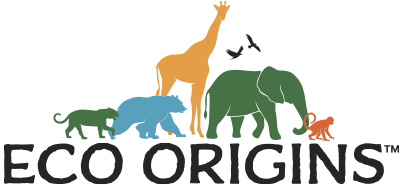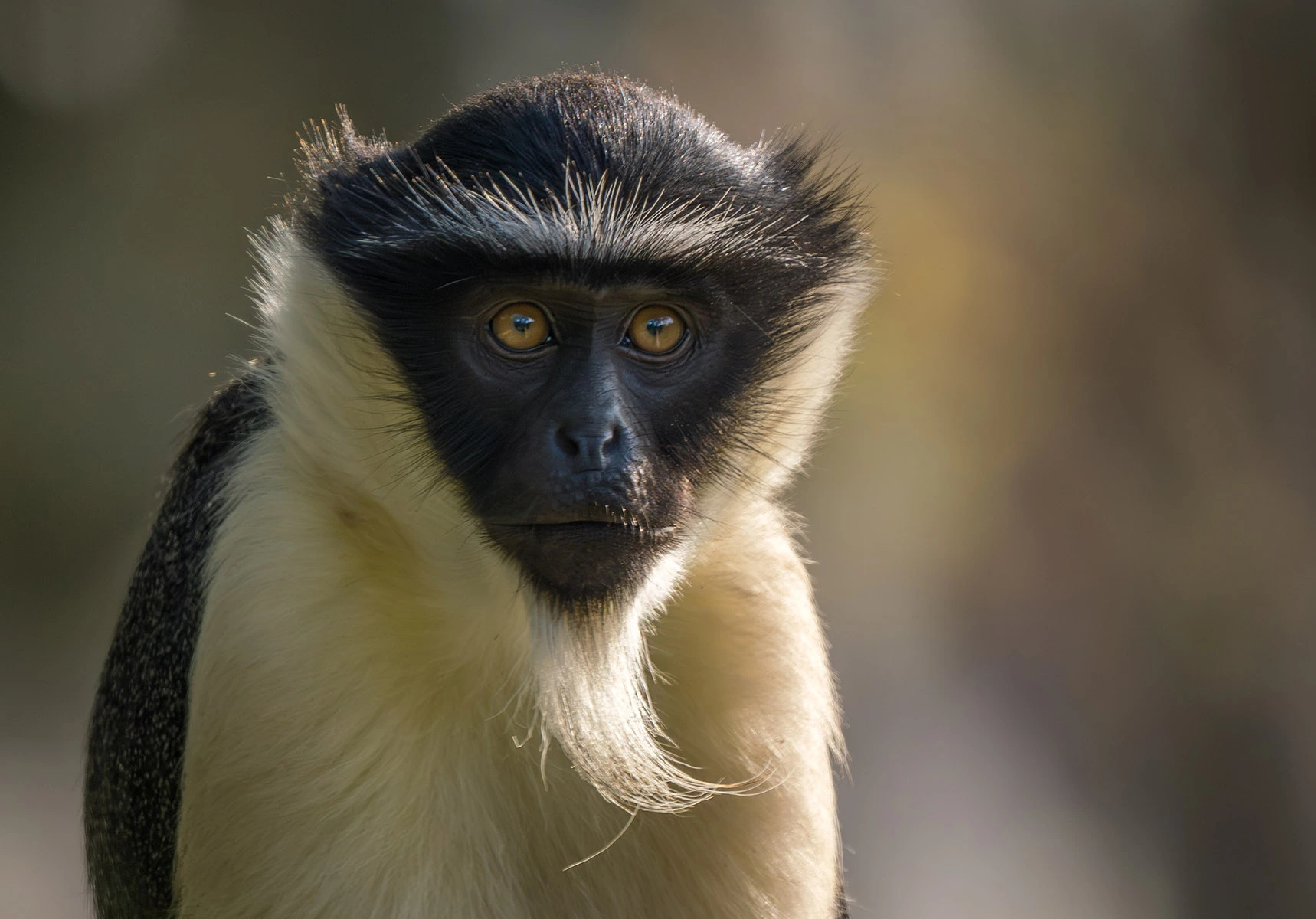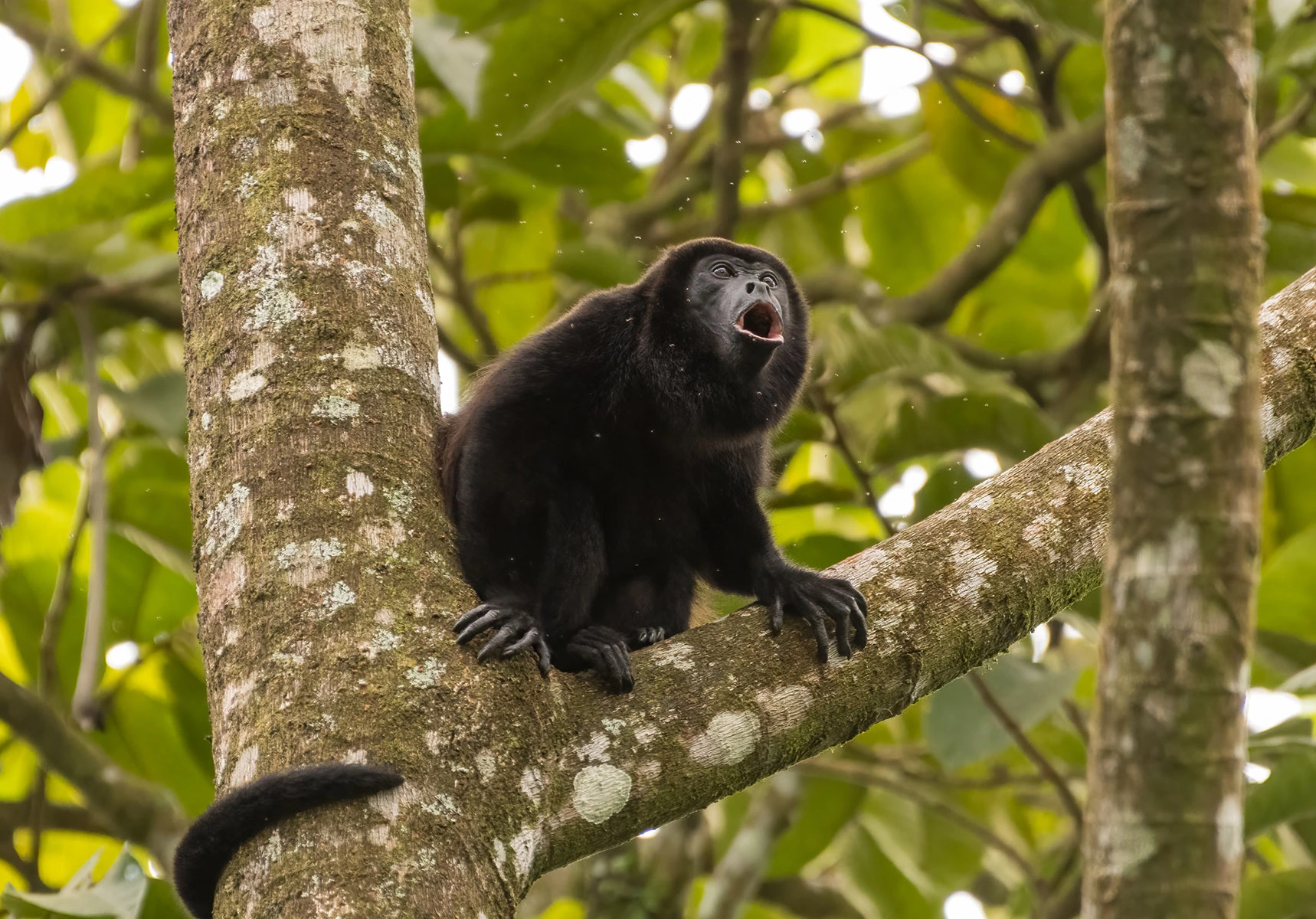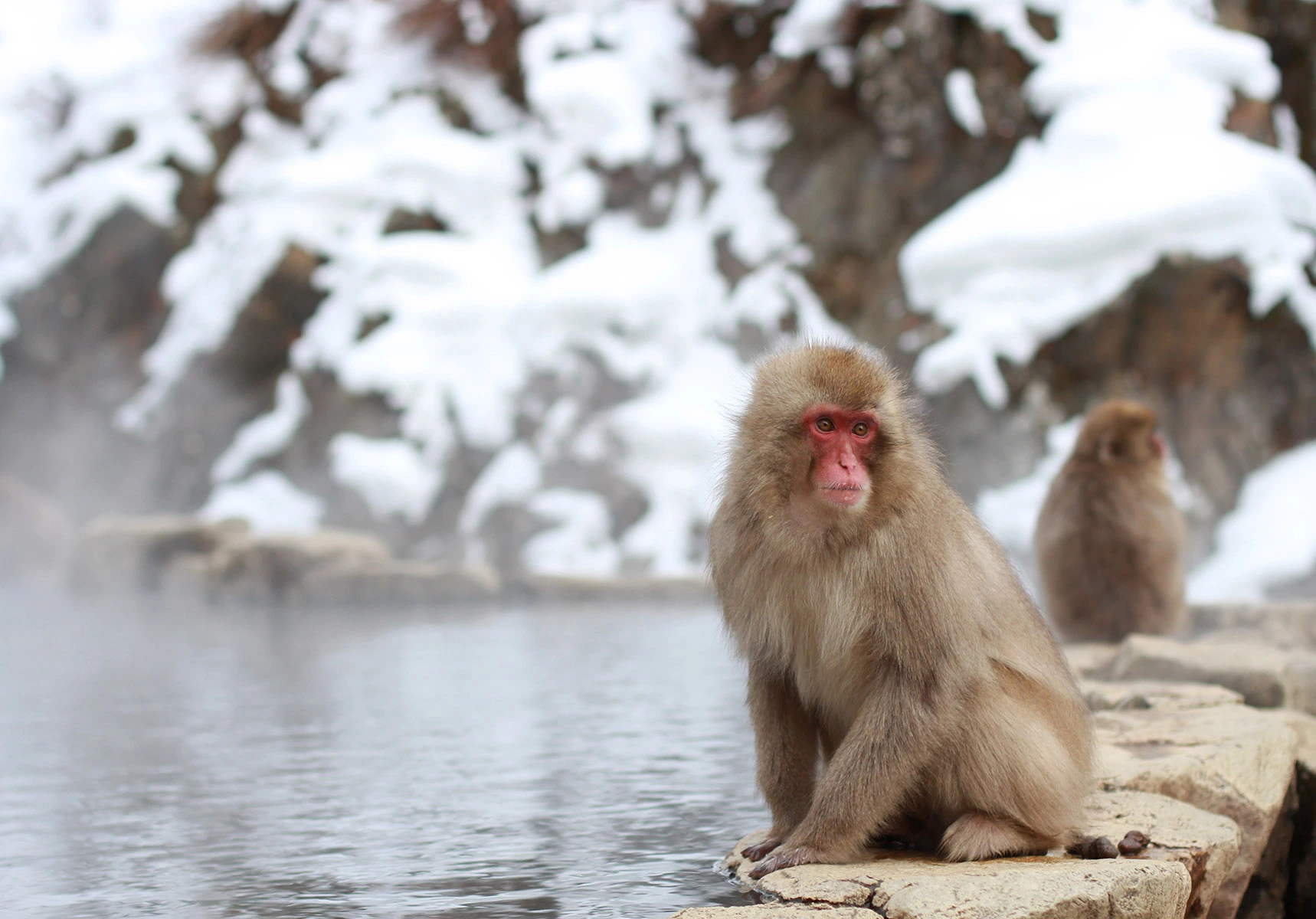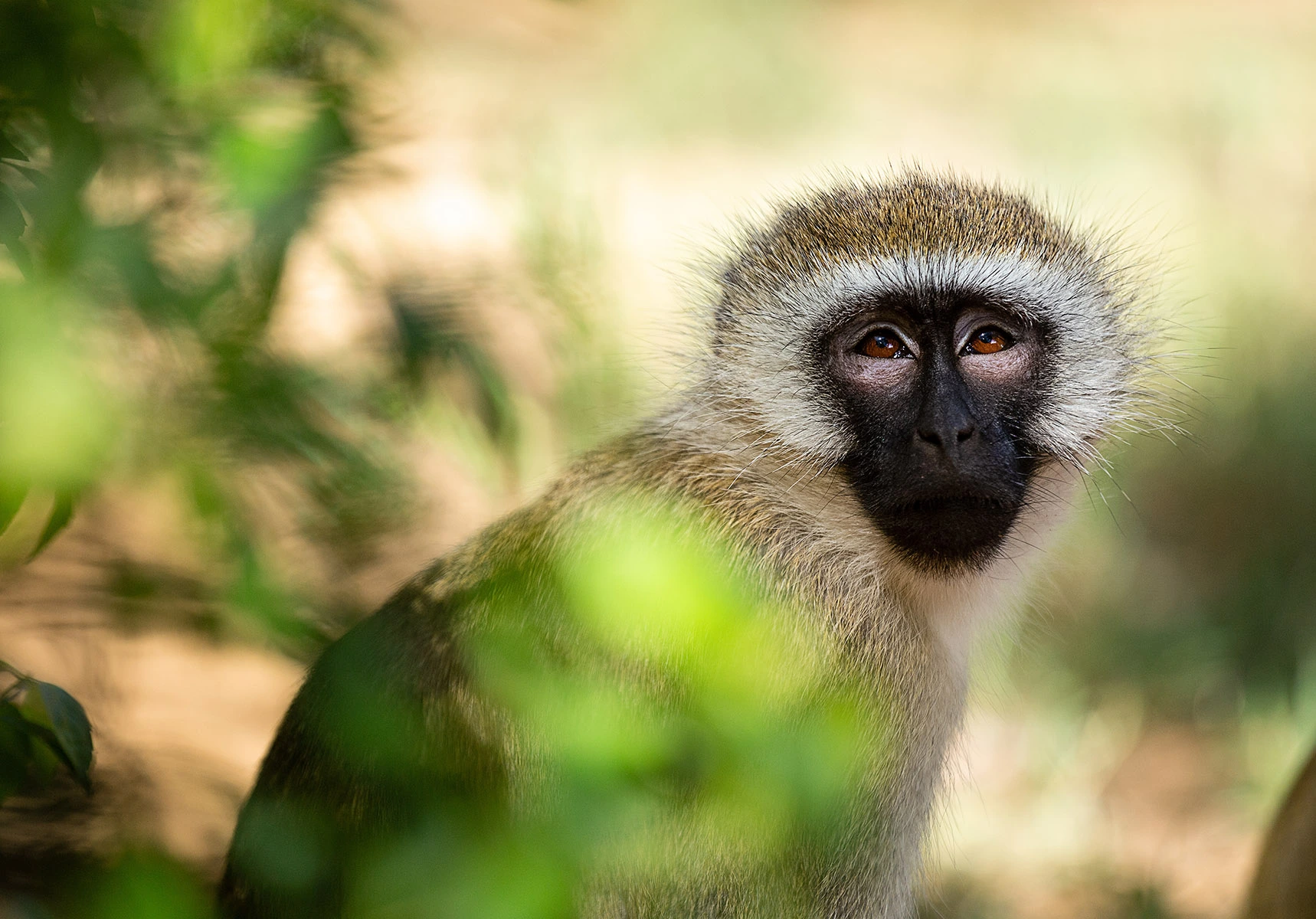Meet Kgabu! His name means “to be strong” or “to be powerful” in Tswana—pretty cool, right? Kgabu is a vervet monkey with loads of personality, and he’s proud of his African roots.
But here’s the fun part—Kgabu is the ultimate jungle prankster! He loves swinging from tree to tree, playing silly games with his friends, and gobbling up bananas like they’re going out of style. If you’ve ever heard the phrase “monkeying around,” Kgabu’s the one they’re talking about!
Lately, though, Kgabu’s noticed something a little worrying—his jungle playground is shrinking! While he stays hopeful, he dreams of a future where his home stays just as big and awesome as it’s always been.
So, who’s ready to join Kgabu and swing into some monkey business? Let’s go!
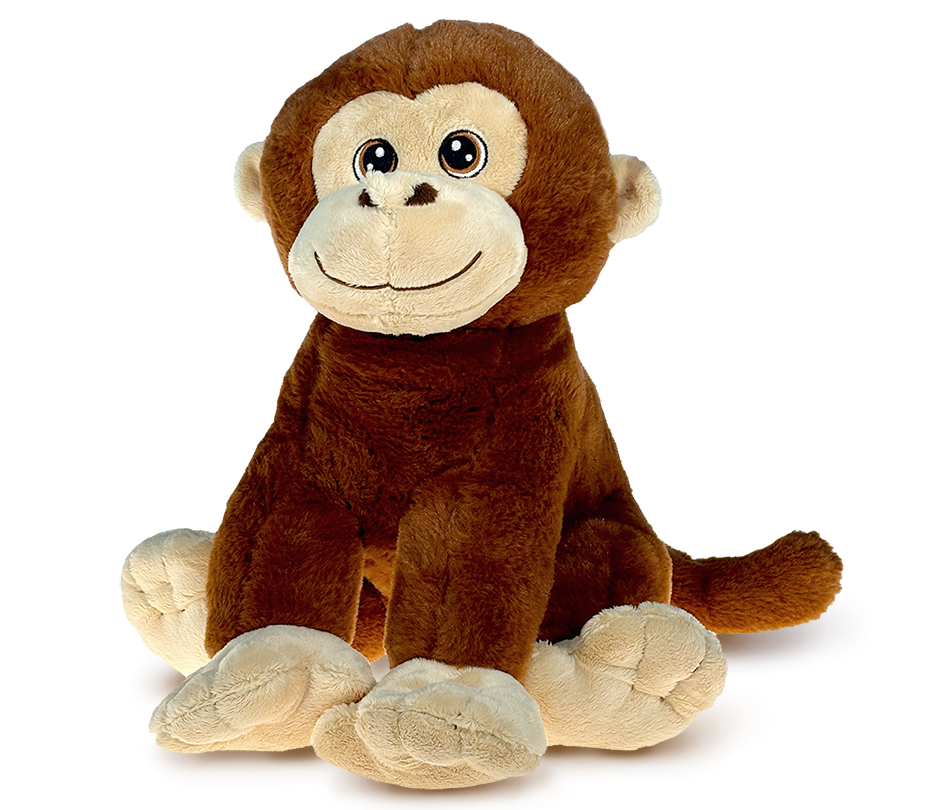
Origin
Old World Monkeys: Africa (e.g., Kenya, Tanzania, Ethiopia) and Asia (e.g., India, China, Indonesia)
New World Monkeys: Central and South America (e.g., Brazil, Colombia, Mexico).
Risk Level
Medium to high, as many monkey species face significant threats like habitat loss and hunting, though some remain stable.
Species
Over 260 various species spread across continents with various degrees of species extinction risks.
Status
Monkeys are listed across categories, with some species endangered (e.g., golden lion tamarin), others protected (e.g., rhesus macaque), and many vulnerable (e.g., mantled howler monkey), depending on their specific threats and populations.
Why is ‘Kgabu’ important to the eco-system?
Well, monkeys like Kgabu are nature’s little helpers! When they munch on fruits and drop the seeds, they’re planting new trees and helping the jungle grow. Pretty amazing, huh?
But that’s not all! Kgabu and his monkey buddies are also part of the jungle’s food web, which is like a giant team where every animal plays a role. Without monkeys, the whole team could struggle, and the jungle wouldn’t be the same.
That’s why keeping Kgabu’s home safe is super important—not just for him, but for all the plants and animals in the jungle. Plus, a healthy jungle helps our whole planet by fighting climate change and keeping the air clean. So, let’s cheer for Kgabu, the jungle’s superstar!
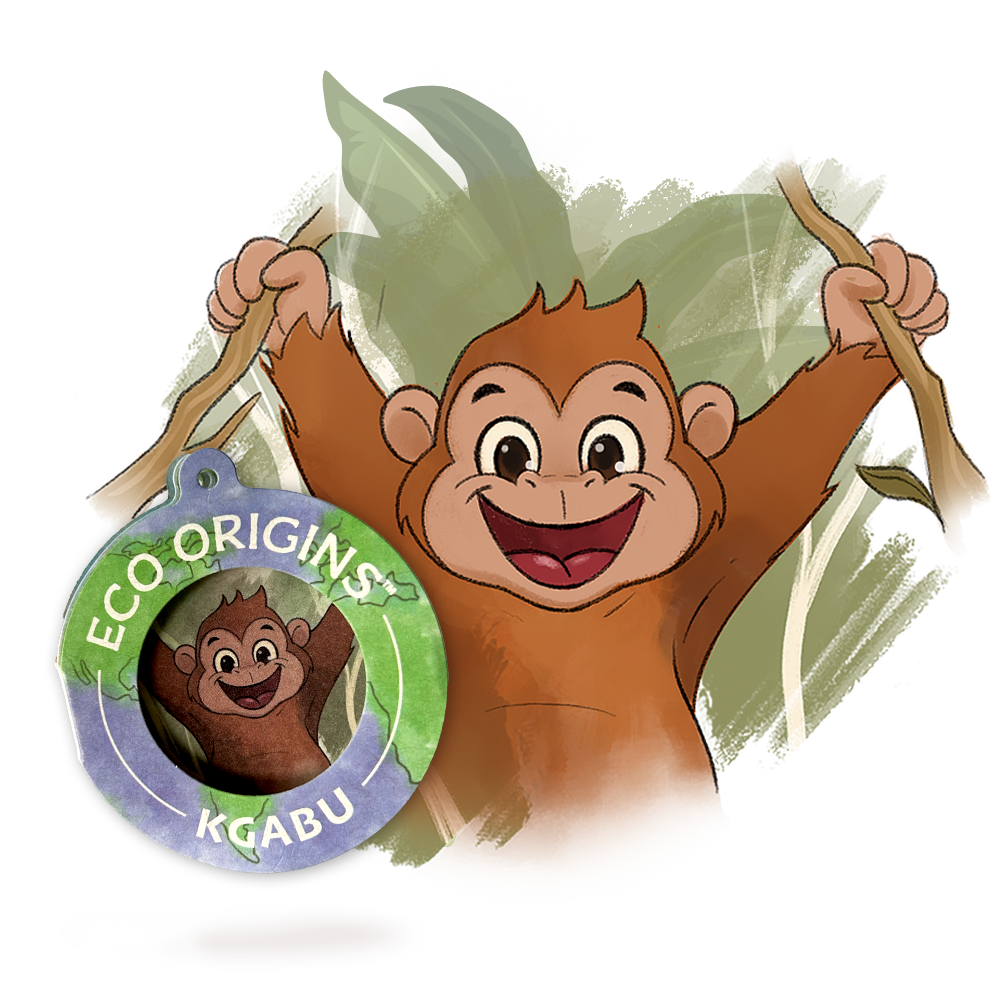
Measuring the Risk of Extinction
A species is considered critically endangered if it has lost 80% or more of its geographic range, and has a greater than 50% chance of extinction over the next 10–100 years.
Critically endangered monkey species, such as the Tapanuli orangutan, have experienced severe population declines, losing over 80% of their range. With fewer than 800 individuals remaining, these species face a greater than 50% chance of extinction in the near future due to threats like illegal logging, mining, and habitat fragmentation.
According to IUCN, there are 63 species of monkeys that are considered Critically Endangered [source]
A species is considered endangered if it has lost more than half of its geographic range, and has a greater than 20% chance of extinction over the next 10–100 years.
Several monkey species are categorized as endangered due to habitat destruction, hunting, and climate change. For instance, the golden lion tamarin has lost over half its geographic range in Brazil’s Atlantic rainforest, primarily due to deforestation. Populations of these species face a greater than 20% chance of extinction within the next century without conservation efforts.
According to IUCN, there are 90 species of monkeys that are considered Endangered [source]
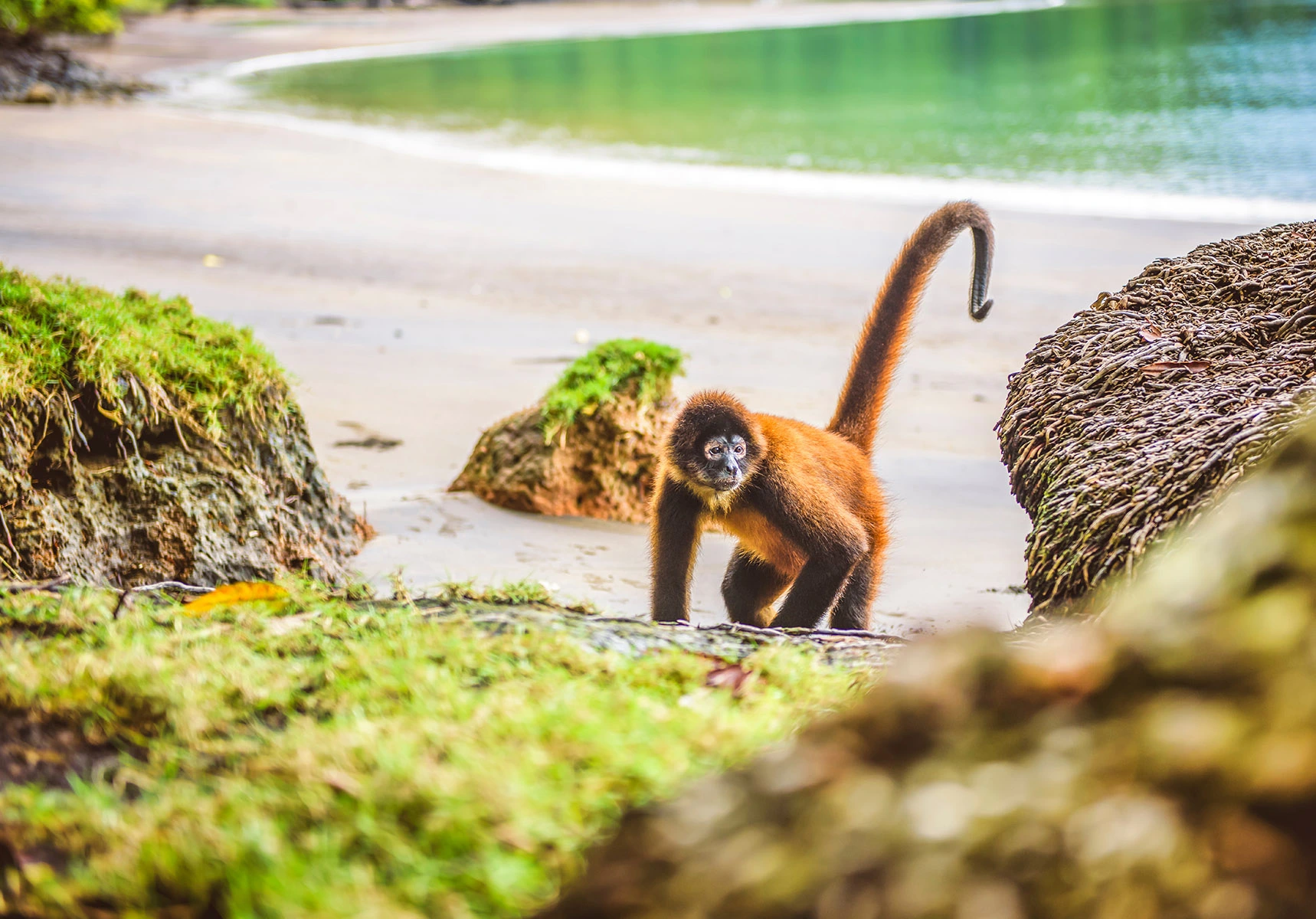
A species is considered vulnerable if there is a greater than 10% chance that it goes extinct in the wild within 100 years.
Vulnerable monkey species, such as the mantled howler monkey, face a moderate but significant risk of extinction, often due to deforestation and hunting pressures. These species have a greater than 10% chance of going extinct within 100 years if current trends continue, though their populations remain larger and more geographically spread than critically endangered species.
According to IUCN, there are 89 species of monkeys that are considered Vulnerable [source]
A species is close to meeting the definition of endangered, vulnerable, or critically endangered based on recent trends.
Near-threatened monkeys, such as the black-and-white colobus, are not yet in immediate danger but are experiencing population declines that could push them into a higher-risk category. Habitat loss from agriculture and logging, combined with local hunting pressures, threaten these species if conservation efforts are not increased.
According to IUCN, there are 29 species of monkeys that are considered Near Threatened [source]
A species is widespread, abundant, and not threatened with extinction.
Least-concern monkey species, like the common squirrel monkey, are widespread and abundant in their native habitats. These species face fewer immediate threats, often due to adaptability and resilience in varied environments, though localized risks such as deforestation and hunting still require monitoring.
According to IUCN, there are 163 species of monkeys that are considered Least Concern [source]
Measuring the Risk of Extinction
A species is considered critically endangered if it has lost 80% or more of its geographic range, and has a greater than 50% chance of extinction over the next 10–100 years.
Critically endangered monkey species, such as the Tapanuli orangutan, have experienced severe population declines, losing over 80% of their range. With fewer than 800 individuals remaining, these species face a greater than 50% chance of extinction in the near future due to threats like illegal logging, mining, and habitat fragmentation.
According to IUCN, there are 24 species of monkeys that are considered Critically Endangered
A species is considered endangered if it has lost more than half of its geographic range, and has a greater than 20% chance of extinction over the next 10–100 years.
Several monkey species are categorized as endangered due to habitat destruction, hunting, and climate change. For instance, the golden lion tamarin has lost over half its geographic range in Brazil’s Atlantic rainforest, primarily due to deforestation. Populations of these species face a greater than 20% chance of extinction within the next century without conservation efforts.
A species is considered vulnerable if there is a greater than 10% chance that it goes extinct in the wild within 100 years.
Vulnerable monkey species, such as the mantled howler monkey, face a moderate but significant risk of extinction, often due to deforestation and hunting pressures. These species have a greater than 10% chance of going extinct within 100 years if current trends continue, though their populations remain larger and more geographically spread than critically endangered species.
A species is close to meeting the definition of endangered, vulnerable, or critically endangered based on recent trends.
Near-threatened monkeys, such as the black-and-white colobus, are not yet in immediate danger but are experiencing population declines that could push them into a higher-risk category. Habitat loss from agriculture and logging, combined with local hunting pressures, threaten these species if conservation efforts are not increased.
A species is widespread, abundant, and not threatened with extinction.
Least-concern monkey species, like the common squirrel monkey, are widespread and abundant in their native habitats. These species face fewer immediate threats, often due to adaptability and resilience in varied environments, though localized risks such as deforestation and hunting still require monitoring.
100% Recycled: Head to Toe!
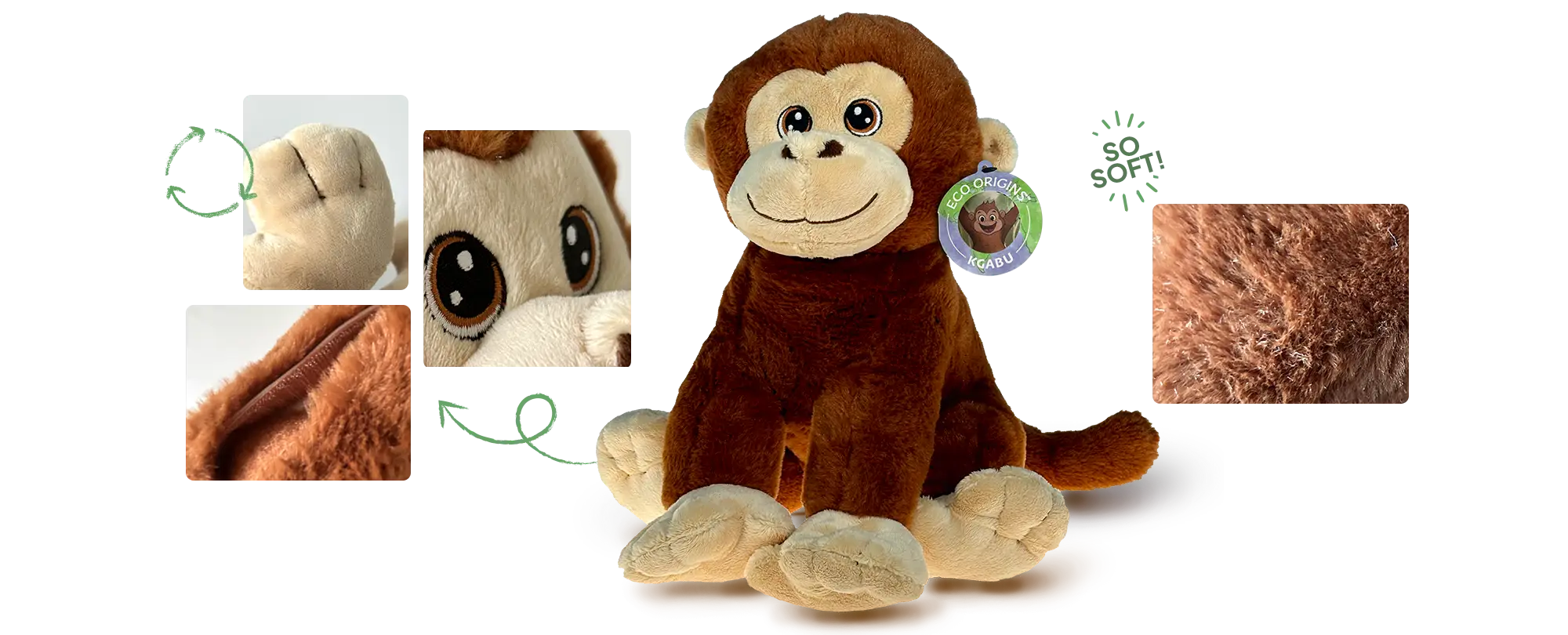
The fabric
We scour the best recycled material fabrics so that our plush always feels premium and soft to the touch!
Hang Tag
The Hangtag is made of recycled paper and attached with a Recycled Polyamide attacher.
Embroidery
Even our threads are recycled! They are extensively used in creation of adorable eyes!
Fiber Fill
What’s inside? Well it’s recycled, super soft, hypo-allergenic fiber!
Call of the Wild: Learning Den
Let’s get inspired to reconnect with nature! Discover cool facts about amazing animals, their families, and why they’re so important for keeping our planet wild and beautiful. It’s time to learn, explore, and take action to protect the incredible creatures that share our world.
260
3.5
35
Ready! Set! Let’s ‘Monkey around’!
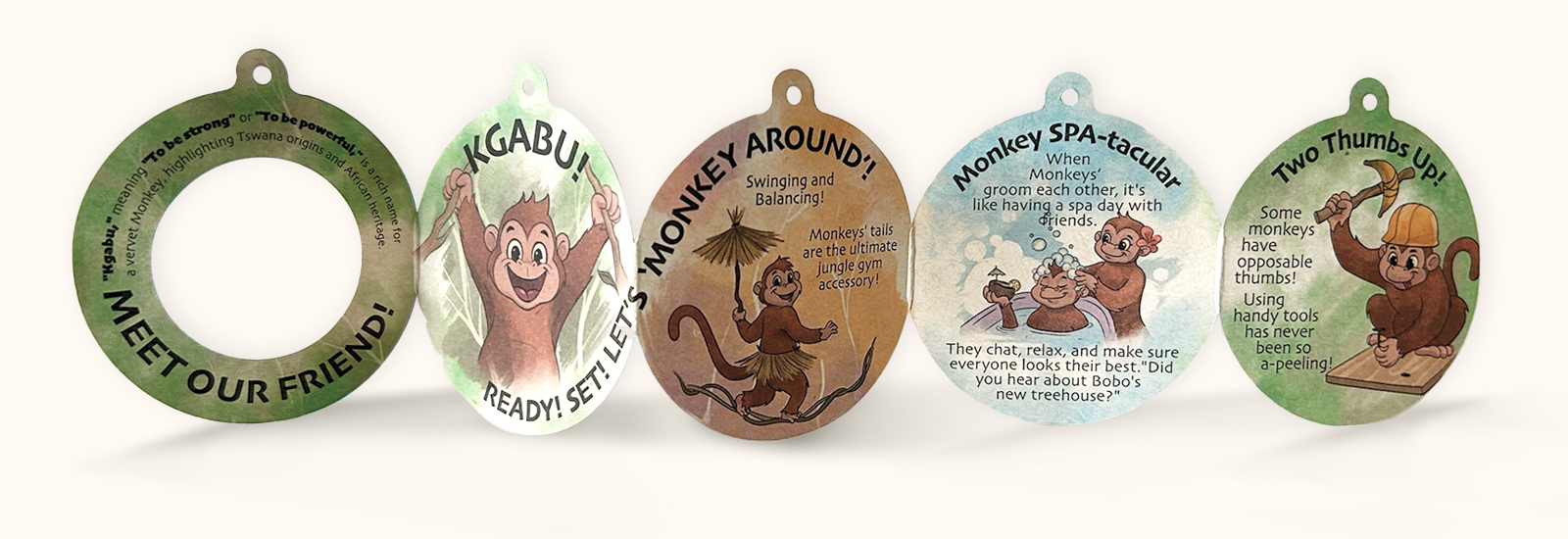
Fun Facts: Nature Nuggets!
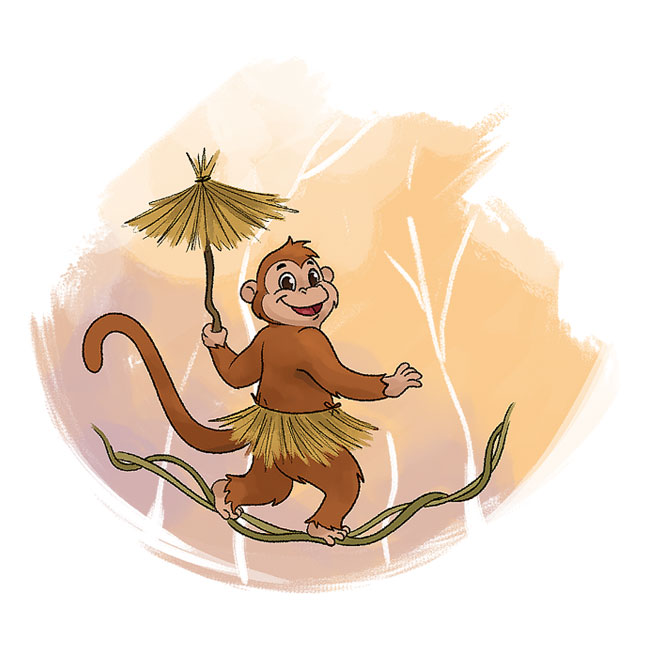
Swinging and Balancing! Monkeys’ tails are the ultimate jungle gym accessory!
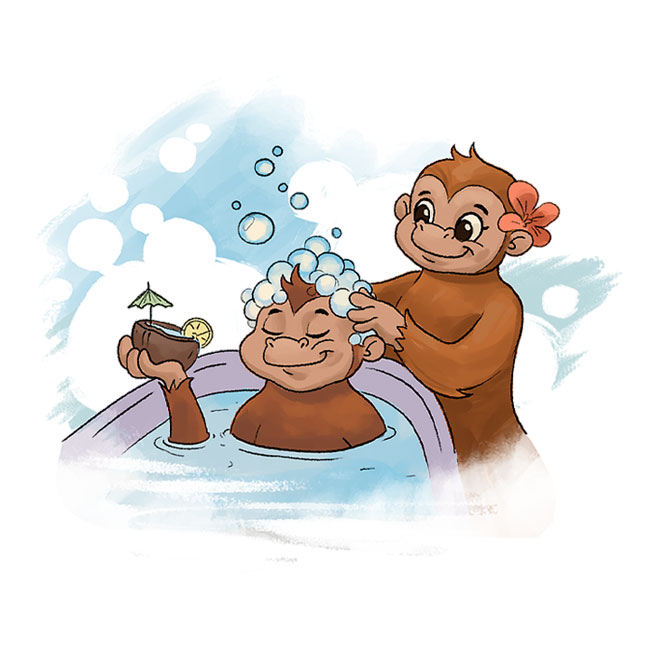
Monkey SPA-tacular” When Monkeys’ groom each other, it’s like having a spa day with friends. They chat, relax, and make sure everyone looks their best.”Did you hear about Bobo’s new treehouse?
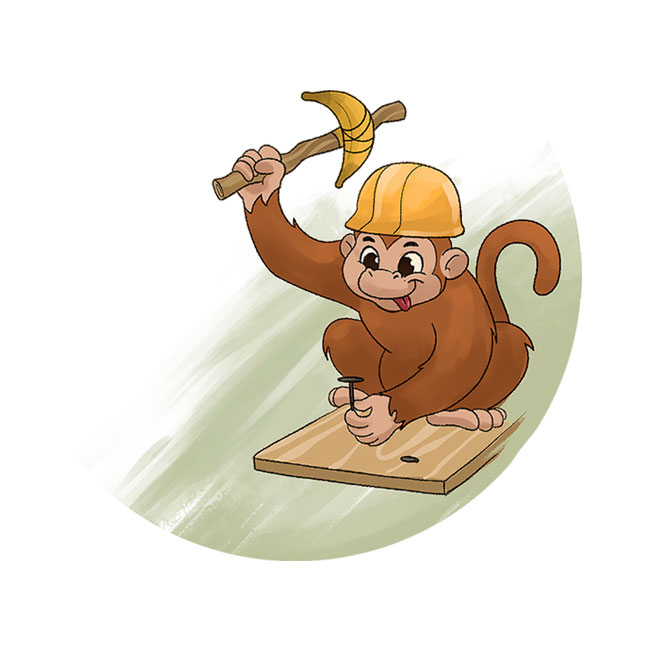
Two Thumbs Up! Some monkeys have opposable thumbs! Using handy tools has never been so a-peeling!
